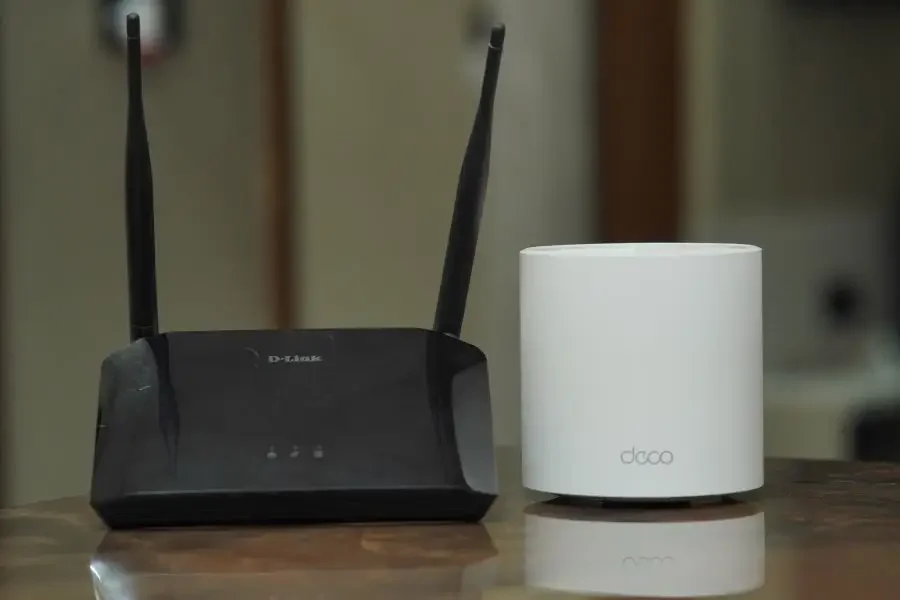In today’s rapidly evolving digital space, network technology enables seamless connectivity, drives business growth and provides better customer experiences.
Network technology has advanced significantly over the years as its demand tremendously increases. Business owners have embraced network technology in their businesses which has fueled the growth of network technology.
According to the Markets and Markets report, the network device market is projected to grow from US$ 26.4 billion in 2022 to US$ 36.4 billion by the end of 2027, at a compound annual growth rate (CAGR) of 6.6% during the forecast period.
As online retailers continue to expand their operations and strive for competitive advantage, staying abreast of the latest network technologies is crucial.
This article explores the top six network technology trends to pay attention to to unlock new opportunities, improve efficiency, and have better customer service.
Table of Contents
Top network technology trends
Conclusion
Top network technology trends
There are many network technology trends online businesses can exploit to take their businesses to the next level. Some of these technologies include:
5G network
5G, wireless technology’s fifth generation, is capable of revolutionizing connectivity by offering faster speeds, lower latency, and increased capacity. 5G deployment is projected to be well underway, with significant advancements in coverage and infrastructure.
A business with a 5G network will have better coverage and improved reliability. 5G enables online retailers to deliver better virtual shopping experiences, smooth mobile transactions, and real-time inventory management.
This technology can transform various industries, including healthcare, transportation, manufacturing, and entertainment.
Moreover, online retailers can leverage 5G to support emerging technologies like autonomous delivery drones.
Small businesses targeting the 5G network technology market can explore several products to leverage 5G networks and cater to the changing needs of their customers. Some of these products include:
- 5G smartphones: With the introduction of 5G, smartphones have become more powerful. As an online retailer, look for 5 G-compatible smartphones with advanced features such as AR capabilities, high-resolution displays, improved cameras, and powerful processors. These products will increase your customer base as more people seek better and faster smartphones.
- 5G home broadband Devices: These provide high-speed internet connectivity to households and businesses. You can sell routers and hubs which allow consumers to have ultrafast internet without the need for traditional wired connections.

- IoT devices: The Internet of Things (IoT) is expected to grow significantly with the adoption of 5G networks. IoT devices such as smart home automation systems, connected wearables, health monitoring devices, and smart appliances can leverage the benefits of low-latency, high-speed 5G connectivity.
Internet of Things (IoT) security
The Internet of Things (IoT) has emerged as a transformative force, connecting a vast network of devices, systems, and services. IoT is about connecting what has never been connected before.
IoT technology has revolutionized various sectors, from smart homes to industrial automation, offering unprecedented convenience, efficiency, and productivity.
IoT has seen extraordinary growth, with billions of interconnected devices deployed across industries. However, this rapid expansion raises concerns about data protection, privacy, and security vulnerabilities.
With these vulnerabilities, online businesses have to focus on enhancing IoT security to protect data, maintain customer trust, and prevent cyber threats.
Emerging technologies and approaches, such as blockchain-based authentication, AI-driven anomaly detection, and firmware integrity checks, will bolster IoT security.
Online retail businesses can seize the opportunities presented by IoT security by offering IoT security platforms, IoT security testing and penetration tools, IoT firewalls, and IoT secure gateways.
Edge computing

Edge computing network technology takes computing resources closer to the point of data generation, enables faster processing and reliability, and reduces latency.
Online retailers can leverage edge computing to enhance consumer experiences by enabling real-time inventory tracking, personalized recommendations, and faster order processing.
Moreover, edge computing enables retailers to analyze large amounts of data locally, reducing the dependence on cloud services and optimizing bandwidth consumption.
By adopting edge computing, online retailers can gain a competitive edge through faster response times, real-time data analysis, and improved operating efficiency.
Artificial intelligence (AI) in networking
Artificial intelligence is revolutionizing the networking landscape by optimizing network operations, enhancing predictive analytics, and detecting potential threats.
AI’s role in networking is expanding, enabling intelligent network management and automation. AI-driven algorithms can optimize network resources, predict traffic patterns, and identify potential security threats.
AI-powered network optimization tools will help online retailers ensure optimal performance, minimize downtime, and deliver seamless user experiences. Moreover, AI-driven security systems will help identify and mitigate cyber threats, safeguarding sensitive customer data.
However, as AI adoption in networking grows, businesses must navigate challenges and ethical considerations to ensure responsible and unbiased AI implementation.
Artificial Intelligence offers businesses many opportunities, some of which include:
- AI-based security systems: AI can significantly enhance network security by identifying and alleviating threats in real time. Look for AI-based network security products such as intrusion detection and prevention systems (IDPS), AI-powered firewalls, behavior-based threat detection solutions, and anomaly detection systems.

- AI-enabled network optimization tools: AI can optimize traffic and adapt to changing traffic patterns. Small businesses can get AI-enabled network optimization tools that can intelligently allocate bandwidth, optimize routing decisions, and prioritize network traffic based on real-time demands. These tools help improve network efficiency, reduce latency, and enhance the user experience.
- AI-driven virtual network assistants: AI-powered virtual network assistants can provide real-time network monitoring, troubleshooting guidance, and automated responses to common network issues. Businesses can incorporate virtual network assistants that provide conversational interfaces to assist network admins in managing and troubleshooting network problems.
Software-defined networking (SDN)
Software-defined networking (SDN) is a transformative approach that decouples network control from hardware, allowing centralized management and control through software.
SDN is gaining momentum due to its advantages over traditional networking approaches. With SDN, businesses can achieve greater scalability, agility, and cost-efficiency in managing network infrastructure.
Moreover, with SDN’s flexibility and agility, online retailers can dynamically allocate resources, adjust network configurations, and scale infrastructure as needed.
However, before implementing SDN, businesses must consider the potential challenges, such as ensuring compatibility, security and managing complex network configurations.
SDN allows for network virtualization, enabling businesses to create multiple virtual networks on a shared physical infrastructure. Small businesses can offer network virtualization services, helping organizations create, manage and secure virtual networks.
Moreover, Network function virtualization (NFV), closely related to SDN, involves virtualizing network functions traditionally performed by dedicated hardware devices.
Retail businesses can develop NFV solutions that leverage SDN to virtualize functions such as firewalls, routers, and load balancers. This enables businesses to reduce hardware costs, improve scalability, and deploy network services flexibly.
Wi-Fi 6
Wi-Fi 6, also known as 802.11ax, is the new generation of Wi-Fi. It connects to the internet with additional technologies that make it more efficient and speeds up connections. Wi-Fi 6 has a maximum speed of 9.6 Gbps, while Wi-Fi 5 has a maximum of 3.5 Gbps.
Wi-Fi 6 is faster because it communicates better with other devices and prioritizes traffic across devices. One of the ways Wi-Fi 6 achieves high speed is through Orthogonal Frequency Division Multiple Access (OFDMA). It works by subdividing channels into subcarriers and allowing transmission to multiple end-point devices at once.
Moreover, Overlapping Basic Service Sets (OBSS) helps improve network congestion. With older Wi-Fi versions, devices must listen to any network noise before connecting. If there was noise, they would wait until the network was clear to avoid interference.
However, OBSS enables the access point to use color to identify the network uniquely. Suppose there is traffic on the channel but not the same color as the local network. In that case, the device can ignore it and continue transmission, which helps increase reliability and improve latency.
Online retailers targeting customers interested in Wi-Fi 6 network technology can consider sourcing several popular and promising products like:
- Wi-Fi 6 routers: These routers are designed to deliver faster and more reliable wireless connectivity. Look for routers that support advanced features like MU-MIMO (Multi-User, Multiple-Input, Multiple-Output), OFDMA, and beamforming. They should also have gigabit Ethernet ports and support many simultaneous connections.
- Wi-Fi 6 range extenders: these help extend the Wi-Fi signal range and eliminate dead zones in larger homes or offices. Look for range extenders compatible with Wi-Fi 6 routers and support mesh network functionality. They should provide seamless connectivity across multiple access points.
- Wi-Fi 6 adapters: Wi-Fi 6 adapters enable devices that don’t have inbuilt Wi-Fi 6 capabilities to connect to Wi-Fi 6 networks. These adapters can be USB dongles or PCIe cards that you can plug into laptops, desktops, gaming consoles, or other devices. Look for adapters that support the latest Wi-Fi 6 standards and offer reliable performance.
Conclusion
Network technology is imperative in enabling seamless connectivity, driving business growth, and providing better customer experiences.
There are several network technology trends online retailers can adopt to grow their business. 5G networks allow faster connection, IoT enables the connection of devices that have not been connected before, Edge computing allows faster data analysis and processing, and AI helps in threat detection and network operations optimization.
An online retailer can source products in line with these network technology trends to help expand their business. To browse listings of a range of quality network products and accessories go to Alibaba.com.




